The Next Generation, which ran seven seasons and noteworthy to home theater enthusiasts for its highly-regarded Blu-ray release (reviewed here), premiered thirty years ago this autumn, and similar to our other Star Trek retrospectives (here, here and here), The Bits for the occasion has assembled a Q&A with an esteemed group of Treksperts who examine the best episodes and offer commentary on the show’s appeal, influence and legacy.
The participants (in alphabetical order)….
Mark A. Altman is the co-author of the two-volume The Fifty-Year Mission: The Complete, Uncensored, Unauthorized Oral History of Star Trek (St. Martin’s Press, 2016).
![Mark A. Altman]()
Robert Meyer Burnett is the co-producer of the Value Added Material found on the Star Trek: The Next Generation Blu-ray Disc season sets.
![tng30 burnett]()
Zaki Hasan is a contributor writer of Outside In Makes It So: 174 New Perspectives on 174 Star Trek TNG Stories by 174 Writers (edited by Robert Smith, ATB Publishing, 2017).
![Zaki Hasan]()
Larry Nemecek is the author of The Star Trek: The Next Generation Companion (Pocket, 1992; updated in 1995 and 2003).
![Larry Nemecek]()
Denise and Michael Okuda are the authors of The Star Trek Encyclopedia (Pocket, 1994; Revised and Expanded Edition, HarperCollins, 2016).
![Denise and Michael Okuda]()
The interviews were conducted separately and have been edited into a “roundtable” conversation format.
Michael Coate (The Digital Bits): In what way do you think Star Trek: The Next Generation should be remembered on its 30th anniversary?
Mark A. Altman: Other than the occasional Star Trek feature, Star Trek was less a part of the tapestry of our popular culture back in 1987 than now, not to mention the thought of an intellectual property being resurrected like Star Trek was virtually unheard of at the time. If you weren’t there, it’s hard to imagine the palpable fervor fans had over the return of Star Trek to TV, although even then the naysayers said if you don’t have Kirk and Spock, you don’t have me. I think the show is ultimately remembered extremely fondly. For a lot of fans who grew up on the series, this is their Star Trek. And it was groundbreaking in many ways. Ultimately, TNG is probably the least divisive show of all of them. Most Star Trek fans enjoy the show and a lot of that has to with the casting. Patrick Stewart is simply brilliant as Picard and anchored the show, but the entire ensemble is beloved and infused their often thinly written characters with a lot of depth even when it wasn’t always on the page.
Robert Meyer Burnett: TNG, after an admittedly rocky beginning, both in front of and behind the camera, eventually reinvented a pop-culture phenomena and carried it back into the cultural zeitgeist, evolving and then far surpassing the cultural reach of the original. Unlike previous television series, the show concluded at the height of its international popularity, directly leading into the cast’s first feature film, Generations, an unprecedented achievement. The television landscape never saw anything remotely like it before... or arguably since. TNG also carried an enormous appeal for women, not only because of the addition of the female leads Crusher and Troi, but also because the series consistently stressed the value of communication and interpersonal relationships rather than fisticuffs and charging in where angels fear to tread, so closely associated with The Original Series. Most importantly, this kinder, gentler Star Trek completely broke free of the now weathered Trekkie stereotype, instead planting a flag right smack dab in the middle of mainstream culture, a culture being rapidly transformed by the information age and its Genesis Device of the home computer. The Next Generation was absolutely the first great television program of the modern information age.
Zaki Hasan: It’s the little sequel that could. No one had any faith in its long-term prospects, but without it the Star Trek franchise would have gone into drydock once Captain Kirk and Co. turned in their retirement papers. As a syndicated spin-off arriving in an era littered with similar such ventures (anyone remember The New Leave it to Beaver or The New Adam-12?), Star Trek: The Next Generation shouldn’t have worked, yet the fact that it not only survived but thrived is a testament to both the ironclad premise of the original show, but also all the ways the new one was specifically engineered to stand apart from it. Few are the sequels/spin-offs that can claim a fanbase that’s just as devoted and beloved as that of the “mothership,” but The Next Generation managed it, and then some.
Larry Nemecek: As the Star Trek that not only proved The Original Series was no fluke, but that the Roddenberry Vision was still relevant and financially viable, reflecting a goodness in ordinary viewers… and as the “comeback kid” to a “failed” little show that became the biggest success story in TV history as well as a cultural landmark — perhaps the biggest in modern history, when all is said and done. And as the event that truly broke open the potential of the Star Trek universe.
Denise Okuda: There’s a whole generation of fans for whom Star Trek: The Next Generation was their gateway into Gene Roddenberry’s vision of the future, just as the original series was to me. To those fans, TNG will always be very special.
Michael Okuda: Star Trek: The Next Generation marked not only the rebirth of Star Trek, but it helped open the doors for a whole genre of science fiction television, from Babylon 5, to X-Files, to Quantum Leap, to Stargate SG-1, Battlestar Galactica, and even Firefly. I think there’s a whole generation of science fiction fans to whom TNG was the gateway.
Gene Roddenberry’s new spinoff was a bold, radical departure from his beloved original series, I was incredibly lucky to have been hired by Roddenberry, Bob Justman, and Herman Zimmerman to help create a new starship for the show. As a life-long fan, it was a dream come true. Still, I was more than a little wary of Roddenberry’s insistence that the new ship be a radical departure from Kirk’s vessel.
Thirty years later, it’s clear the Great Bird of the Galaxy was right: The new show needed a new ship and a new crew to blaze its own trail. I’m proud to have been part of the team at Paramount Pictures that launched Star Trek: The Next Generation on seven magical years of adventure into the final frontier.
![The cast of Star Trek: The Next Generation]() Coate: What did you think of The Next Generation upon your first viewing?
Coate: What did you think of The Next Generation upon your first viewing?
Altman: I so wanted to love it and as flawed as Farpoint was, I saw potential despite the fact that it was not very good. Obviously, there are great moments and you could see the seed of an intriguing series, but it hadn’t really come together in the premiere. What was more dispiriting was the second episode, The Naked Now, which is just atrocious and paved the way for a series of clunkers that really left people questioning whether this series would ever amount to anything. There’s no question in my mind had TNG not debuted in first run syndication and was owned by Paramount, any network would have cancelled it after 13 episodes. I was in college at the time and we huddled around a 19” television to watch it and I remember all being somewhat underwhelmed. Strangely enough, the following week I flew out to Los Angeles and visited the set of Too Short a Season to write about it as a journalist, which was the first of many visits to the set. I was genuinely intrigued on that visit by how much the cast really did seem to like each other and saw glimmers of possibilities for the fledgling series. The best thing about it was John DeLancie as Q and that was a thinly veiled Trelane substitute at best.
Burnett: I’d already been a life-long Trekker. In fact, I was so fanatical, I’d even skipped out of college and hopped on a plane from Seattle in November of ’86 to see Star Trek IV: The Voyage Home in Los Angeles, because my great friend Taylor White had tickets to see it in the Academy of Motion Picture Arts and Sciences Theater on Wilshire Blvd. By September of ’87, the beginning of TNG’s first season, I was a junior in college at Evergreen State. There, I hosted what I still believe to be the Washington State Premiere of the series. TNG debuted three days earlier in the Los Angeles market than in my neck of the woods, so I had Taylor Fed-Ex me a VHS tape of Farpoint. I daisy-chained a bank of TVs to a VCR in the bottom of Evergreen’s A-Dorm, printed flyers and posted them all around campus, and wound up having a huge turnout to watch the series premiere. For the next 24 hours, people just kept coming in and rewinding the tape, watching it over and over again. I think I watched it about five or six times, taking in every detail, and I’m quite sure half the campus had seen it before I finally reclaimed my tape.
Upon first viewing, I actually loved it. While it did seem stilted, alien, and of course nothing was familiar, and it strangely seemed even older than TOS, yet somehow, it still seemed very, very Star Trek to me. I tuned in with a religious fervor week after week. It was obvious from the first episode Patrick Stewart was perfect as Picard, completely reinventing what I’d come to understand as the quintessential starship captain. Data also obviously really worked, but not much else initially did. Farpoint was certainly no The Man Trap. However, that first season does have some gems, including The Big Goodbye, 11001001, Coming of Age, Heart of Glory, and the absolute guilty pleasure of Conspiracy, which has an incredible first half and a very, very enjoyably pulpy second.
Hasan: My first viewing was at a friend’s house in fall of ’87, watching a handful of minutes from Encounter at Farpoint on VHS, all without even the slightest indication that a new Star Trek was even in the offing. I was seven at the time and living abroad, but had nonetheless become accustomed to Original Series reruns and the first four movies. As such, the notion of a totally different Enterprise commanded by a bald British guy was a pretty bitter pill to swallow. Needless to say, I didn’t make it very far that first viewing. In fact, it wasn’t until the first season was in reruns the following summer that my brother, five years older and ultimate arbiter of my pop culture tastes, said it was okay and gave me the go-ahead. The first episode I saw the whole way through was Datalore, and from there to the end, I was a capital-F Fan.
Nemecek: Thinking that the “80 years ahead” timeframe was a great way to preserve TOS without a reboot…thinking it was definitely a pilot, even if it felt a bit “creaky” at times but celebrating each success of character, plot and audience attraction.
D. Okuda: To be honest, I was a little disappointed with Encounter at Farpoint. On the other hand, I knew that Gene Roddenberry was at the helm, and that he had an excellent team, so I was pretty sure it would find its own footing.
M. Okuda: When you work on a TV show or movie, your perspective is quite different from watching something as a member of the audience. For me, I was immensely proud to be part of the team bringing Roddenberry’s new vision to life. At the same time, nearly anyone who works in production will tell you that when you look at your own work, it’s really hard to see beyond the flaws, beyond the things you wish you could have done.
Coate: In what way was Star Trek: The Next Generation significant?
Altman: I don’t think TNG is as significant in the annals of television as The Original Series which was incredibly groundbreaking and a monumental achievement in television. TNG really built on the template of what TOS had established. That said, it was significant in a few ways; first, featuring a bald, older man as its series lead and introducing the world to Patrick Stewart. Yes, he’d been in Dune, Excalibur, I, Claudius and Lifeforce and a bunch of other films and theater, but he really emerges as a potent leading man through this series. Also, the distribution channel is significant. Through first run syndication, which became a viable distribution medium for a variety of shows through the 90s, was a very lucrative and successful distribution channel for the studio and later Warner Bros. It was a way to exploit niche shows and make a huge amount of money from them. It wasn’t until all the channel groups started to get absorbed by the weblets like UPN and WB later on that it wasn’t really a viable model anymore. The other way it’s significant is it gave us so many important showrunners who were minted here ranging from the brilliant Ronald Moore to Brannon Braga to Rene Echevarria to Naren Shankar and many others who’ve gone off and created or run many others significant genre series. It also did a remarkable job of exploring Klingon culture and, of course, The Borg are a significant contribution to the Trek mythology as well.
Burnett: If nothing else, TNG proved the creative spark need not die after the birth of one television phenomenon. As Patrick Stewart himself will tell you, no one really believed TNG would ever work. It began as a crazy experiment in a new television business model, the one-hour syndicated drama, and eventually led to twenty-five seasons of beloved television which continue to inspire worldwide audiences over a quarter century later. If that’s not a success story to celebrate, I don’t know what is.
Hasan: First and foremost, its success on the small screen proved Roddenberry was several decades ahead of his time back when The Original Series limped and gasped its way to three seasons on NBC. In terms of the overall franchise, it’s most important for how it de-coupled the Trek brand from its original stars and made it truly a “universe” that could stretch far into the future while withstanding several different variations on the premise.
Nemecek: TNG’s biggest gift to all of Trek, to all of pop culture…is to show that not only can you catch lightning in a bottle again, you can do it even better — and with an even better bottle!
Meaning, as world-affecting as The Original Series was with all its aspirational memes, archetypes and world-building magnetism…The Next Generation — an off-network sequel that was a huge gamble financially as well as conceptually — magnified everything great about original Star Trek and magnified it to a whole new level. Star Trek was no longer just about a hero crew on one starship in one future time window: TNG opened up Roddenberry’s universe and vision to encompass an entire timeline, across centuries forward from and backwards to us, and even alternate timelines to those.
TNG showed just how huge the Star Trek “sandbox” could be, with all kinds of nooks and crannies yet to play in — even parallel “levels” — all carrying the same connected look, feel and philosophy as a mirror on our own times. A futuristic, optimistic, respectful take on whatever the world of today needed to hear... to get to the world of tomorrow. Again, carrying all the success seeds of TOS — but just sown across a much bigger field of vision.
TNG also made rationality, intellectualism and science problem-solving in the real world cool — if that was even possible to do after Spock, it took it via Data and Geordi and Picard himself to a whole new level: that talk, not fighting, could unlock peace through understanding, sometimes in surprising (Darmok, Microbrain, Borg liberation) ways.
D. Okuda: Star Trek: TNG was the first major syndicated hour-long science fiction series. It proved that you can do science fiction outside the major networks, thereby creating a whole new pipeline for imaginative programming. It was also the first show of its kind to have a real budget, so it really could compete against network fare.
M. Okuda: TNG was the first major science fiction series to take advantage of the then-cutting edge technologies of motion-control miniature photography and digital video compositing. This made it possible for the show to have far more visual effects than had been possible with the original series, which was dependent on traditional photochemical optical effects, and thereby greatly increased the visual scope of the series.
![A scene from Star Trek: The Next Generation]()
Coate: Which are the standout episodes (or seasons) of The Next Generation?
Altman: I still think the third season is the best season of all of them. It took some risks that didn’t always pay off, but Michael Piller really forged the show’s identity that season. As far as best episodes there are a couple that I still love such that aren’t the usual suspects. Best of Both Worlds always shows up at the top of these lists like City on the Edge of Forever does for TOS, and deservedly so, but I think there some smaller, less well known episodes that number among my favorites including first season’s 11001001 and third season’s The Survivors. In a way I prefer Q Who to Best of Both Worlds and I adore Family, Tapestry, Lower Decks, Who Watches the Watchers, The Drumhead, Yesterday’s Enterprise, and the finale, All Good Things (even though it was really hampered by all the excessive technobabble Michael Piller insisted on when it should have really stayed focused on character which is what Ron and Brannon correctly wanted).
Burnett: In my mind Season Three remains the most important season of TNG’s run. The significance of Michael Piller’s arrival cannot be undersold. Without it, TNG might never have survived its third season, much less gone on to change the face of the television business forever by proving the viability of the hour-long syndicated dramatic series. Piller’s greatest contribution to Trek, mandating stories originated with the characters first, instead of some outside force, alien or otherwise, marked a huge sea-change in modern Trek storytelling. As Ira Behr says in our Resistance is Futile doc, upon his arrival, even Season Three had already gone “into the toilet,” with the writing staff, after Piller’s arrival. Still in the midst of the tumultuous aftermath of both the revolving door of the first two seasons and the writers’ strike, somehow, Piller weathered the storm and led the writers to craft an incredibly strong season of television, with some fantastic episodes. The standouts included Who Watches the Watchers, The Survivors, The Enemy, The Defector, The Hunted, Yesterday’s Enterprise, The Offspring, Sins of the Father, Sarek and the defining Best of Both Worlds (Part I). Ron Moore also showed up in Season Three, making his first professional sale with The Bonding, and going on in the season to define both the Romulans, with The Defector and beginning the evolution of not only Worf’s character, but the entire Klingon Empire, with Sins of the Father. Sarek also marked the first moment in the series when Rick Berman finally allowed TNG to overtly acknowledge TOS, paving the way for Leonard Nimoy’s triumphant return as Spock for Star Trek’s 25th Anniversary in Season Five’s two-part Unification.
Hasan: The Measure of a Man, Who Watches the Watchers, The Inner Light, Q Who, and The Drumhead are the episodes that spring to mind when I think of the absolute best that The Next Generation was capable of. A compelling question about the human condition that’s addressed in a thoughtful way that only science fiction can really achieve, ably assisted by standout performances from the leads.
Nemecek: The third season is the turnaround, thanks to Michael Piller, who “saved” the franchise from mediocrity and unleashed the family feel on top of the science and adventure. TNG boomed after Season Three, key multi-flavored eps like Sins of the Father, The Offspring, Captain’s Holiday, Sarek, especially Yesterday’s Enterprise — and the iconic summer-long cliffhanger that exploded in popularity, The Best of Both Worlds.
Beyond that, The Inner Light won a Hugo for its decidedly un-spacey exploration of the inner self, The Measure of a Man and Chain of Command took on civil rights and torture, and Darmok may well be the best sci-fi take on communication among us, ever. Q shows like Tapestry and Qpid are just fun, too, as well as illuminating about life choices. For our times, The Drumhead and The Wounded and The Pegasus…maybe even The Game.
D. Okuda: The Inner Light, The Offspring. Wonderful character-driven pieces, each with an intriguing science fiction premise. I’d have to say that TNG’s breakout year was the third season, when Michael Piller took the reins. Gene Roddenberry set the show into motion, but it was Michael Piller who figured out how to make it work on a regular basis.
M. Okuda: Measure of a Man, Yesterday’s Enterprise, All Good Things.
![A scene from Star Trek: The Next Generation]()
Coate: Flipping around the previous question, which episodes were the worst? And did the series ever jump the shark?
Altman: It’s a toss-up between the embarrassing Night Terrors and the utterly dreadful Masks unlike something like The Royale which I find absurdly enjoyable much like Spock’s Brain despite both being atrocious.
Burnett: Season Seven’s Sub Rosa and Masks are frequently cited as some of the series’ worst, but I’d maintain there’s a lot to love in both of those episodes, with lush production values, some stellar acting from our principals, and premises which can only be considered absolutely bonkers. The production staff must’ve been shaking their heads each day of principal photography. In my Season Seven Blu-ray doc, Brent Spiner relates the story of how he begged not to do Masks right after he fronted Thine Own Self, another massive Data episode... as he was simply too exhausted to do what was required of him. The producers said no. But the results of his free-form acting, playing multiple characters, make for some truly compelling viewing, if not for the reasons fans usually tune into Trek. The HD restorations alone, showcasing the top-notch production values, make both episodes highly watchable.
No [the series never jumped the shark, but] I’d say those resoundingly mediocre episodes, with flawed premises and lackluster execution, are TNG’s greatest offenders. Season One contained some obvious and egregious episodes, like Justice, and the borderline racist but interestingly matriarchal Code of Honor, but nothing comes close to the truly wretched Home Soil, which not only had perhaps the worst matte painting of the entire series, but also the infamous line “Ugly Bags of Mostly Water,” a reference to humans, which should’ve never made it out of a word processor, much less to air. Other episodes I detest include Season Two’s unfunny comedy episode The Outrageous Okona, treating humor in the most rudimentary of fashions; Season Four’s Night Terrors, with Deanna Troi floating in a Spirograph etching; Season Six’s Realm of Fear, with a truly stupid and nonsensical new transporter wrinkle; and Season Seven’s Dark Page, which could’ve been a potentially devastating look at how the loss of a child can forever affect a mother, but instead shows us Mrs. Troi going nuts over the retconned death of Deanna’s older sister.
Hasan: Angel One, Shades of Grey, Sub Rosa, Night Terrors, and Masks are what I immediately think of as TNG at its worst. Goofy premises, chintzy effects, and an overreliance on impenetrable technobabble are all culpable in making these the dregs.
D. Okuda: The Most Toys and Masks. But no, I don’t think the show ever jumped the shark, especially because I think All Good Things is probably the strongest finale to any of the Star Trek series.
M. Okuda: Code of Honor, also Emergence. And Sub Rosa. I’m sure each of those sounded like good ideas in the story meeting, but by the time they ended up on film, not so much.
![A scene from Star Trek: The Next Generation]()
Coate: If you could name only one, which episode of TNG is your favorite?
Altman: The Orville. That’s a little joke... extremely little, Ensign. All kidding aside, I think The Orville is a delightful homage to TNG and really shows what an impact TNG has had on popular culture and, obviously, Seth MacFarlane who adores the show.
Burnett: My first inclination, to go with an obvious favorite, such as Inner Light, Yesterday’s Enterprise or Best of Both Worlds, bores even myself. I’d look to Chain of Command, Parts I and II as probably not only my favorite TNG story, but a prime example of Star Trek firing on all cylinders. A war story with obvious allegorical underpinnings to our current world situation, made even more prescient over the years with the global war on terror, Chain of Command remains not only compelling drama and great science fiction, but also a terrific actor’s showcase. The unforgettable scenes between Picard and David Warner’s Gul Madred are some of the best acting in the series, made even more compelling knowing Patrick Stewart was already a massive fan of Warner’s, calling his Hamlet one of the best Stewart had ever seen. Watching those two characters doing nothing more than sit in chairs across from one another remains one of the high points of the entire seven year run of the series. Then we get Ronnie Cox’s Captain Jellico, one of the best Starfleet Captains ever seen outside of a series lead, and his ongoing conflict with Riker. One of the only times we’ve seen a principal cast member so obviously in the wrong. Crusher participates in a dangerous, paramilitary away mission and Data is once again clad in a red Command tunic. Finally, unlike so many TNG A and B stories which keep interrupting each other, the threads of Chain of Command all come together to weave a taught tapestry of outstanding television, even thirty years later.
Hasan: Like so many others, The Best of Both Worlds is the episode that got me fully off the fence and convinced me that, yes, The Next Generation did indeed deserve to have a seat at the table right alongside its illustrious predecessor. Twenty-seven years later, the cliffhanger ending for Part One remains exactly as shocking and heart-wrenching as it was when it first aired.
Nemecek: Oh boy. I used to always say Yesterday’s Enterprise, but that may be tied to its status as a personal landmark for me — when I knew the series had arrived. Maybe it’s even Cause and Effect now, or The Chase. I hate picking all-time faves of anything.
D. Okuda: The Inner Light.
M. Okuda: Measure of a Man.
[On to Page 2]
[Back to Page 1]
Coate: Do you believe the show’s first episode, Encounter at Farpoint, served as an effective gateway episode? If not, which episode do you think works best as an introduction to the series?
Altman: Probably The Corbomite Maneuver [from The Original Series]. That’s all of Star Trek in one package, everything you need to know about it in one episode. That said, if you want to explore TNG, start with The Ensigns of Command [from Season Three] and go from there through Season Three. If you like that, keep going. If you don’t, try Deep Space Nine.
Burnett: The best introduction to the series, especially for modern audiences, is probably Season Two’s Measure of a Man. Still what I consider an almost “prototype” TNG episode, it’s the first of the series I’d consider a true classic, if not Top Ten, episode. Preferably the extended version from the Season Two Blu-rays. A fantastically well-written story by Melinda Snodgrass, with a still-compelling storyline illustrating Trek at its very finest, with a compelling science fiction premise and a great dilemma for three of the principal characters to face. There’s also two great guest characters in Commander Bruce Maddox and Captain Phillipa Louvois.
Hasan: This may sound contrary to my answer earlier, but I actually do think Farpoint is a decent jump-on point for the show. It’s clearly the first adventure, meaning we’re likely to grade it on a curve, and it sets up the characters and their world, while also leaves lots of room for the characters to grow. I certainly don’t think it’s perfect, but as an intro to the Next Generation era of Trek, it works just fine.
Nemecek: Gateway to a Trek fan, a sci-fi fan generally, or a complete mundane viewer? For all its faults, I might just stick with Farpoint. Either that, or The Measure of a Man. Or even Family.
D. Okuda: I think it would be The Best of Both Worlds: Part I because it has everything for which TNG is known. A great story, strong character conflict, action, and a fascinating s-f premise. And, of course, that powerful cliffhanger.
M. Okuda: Farpoint was a good first episode/pilot in that it nailed down a lot of the basic concepts for the show, but I don’t think it was a great introduction. Both Worlds is a good choice, as is Tin Man and Cause and Effect.
![A scene from Star Trek: The Next Generation]()
Coate: Where do you think TNG ranks among the numerous Trek shows?
Altman: It’d be hard to argue that the series is more iconic than the original, it’s not, but it’s certainly the most well-known Trek show with the most well-known Trek characters other than Kirk, Spock and McCoy. That said, even though I think Deep Space Nine is probably the better show, it certainly has to be considered the second best Star Trek series next to the original and the most enmeshed in popular culture. At the time, it was clearly the first of the Trek shows to really appeal to families. You saw that at all the conventions where suddenly you were seeing kids and families for the first time and not just college kids and older. The biggest problem with TNG is in many ways it’s the most dated due to its static camerawork and dental office scores and so much that seemed so futuristic at the time has already been outrun by reality. The fact that TOS was far more stylized also helps make it more timeless than TNG which also is cursed in some episodes with a lethargic pacing that’s particularly in evidence when watched with commercials.
Burnett: Aside from The Original Series, it’s easily the most important of the entire Trek franchise, but it’s only my third favorite series behind TOS and DS9.
Hasan: For me The Original Series always goes first simply by virtue of it having blazed the trail that all others followed. But of the subsequent series, I’d place The Next Generation after Deep Space Nine, which I think is the best of the spin-offs and was in many ways a truer reflection of the ethos and worldview of the original. But just to be clear, that’s not to diminish in any way the remarkable sweep and scope of what TNG accomplished. It broadened the canvas and created room for all those other spin-offs to play.
Nemecek: Whew. It had #1 status for so long, competing with TOS as its prime generation faded; now DS9 makes a case as viewing habits shift. It’s definitely affected the most viewers and fans at the moment. As a champion of intellectualism and rationality, I think its power has faded somewhat after 9/11 and rawer storylines of DS9 and Enterprise “felt” more viscerally satisfying... but in the crazed anti-intellectualism of our times now I think TNG should reassert its prominence. They used to mock Picard for having staff meetings versus’ Kirk’s action! cowboy diplomacy — but we see the folly in the latter, too, now.
D. Okuda: Second to The Original Series.
M. Okuda: Yes. We both grew up with The Original Series, so will always be first in our hearts.
![A scene from Star Trek: The Next Generation]()
Coate: Where do you think Picard ranks among the Trek captains?
Altman: A strong second to Captain James Tiberius Kirk with Captain Sisko and Lorca a close third. Stewart is brilliant in the role and Picard is an engaging and cerebral captain, but there’s only one Captain Kirk.
Burnett: Second only to James T. Kirk.
Hasan: Similar to my answer above, I have to place James T. Kirk at the top of my list, but Jean-Luc goes right underneath. Picard is very much the “perfected man,” representing the fulfillment of Roddenberry’s utopian ideal, and as such is a role model worth emulating. Calm under pressure, always ready with wise words, he’s both who we’d want to serve under and who we’d want to become.
D. Okuda: Second to Kirk.
M. Okuda: Yup.
Coate: Favorite TNG character?
Altman: McCoy? That’s not quite the answer you were looking for. Jonathan Frakes is my favorite person from the show who I’ve worked with as a director on The Librarians and think the world of and I do like Riker, but I’d have to say character-wise, it’d probably be Ensign Ro. Worf would be one of my favorites... on Deep Space Nine. Worst is Tasha Yar’s Roman doppelganger, Sela, because it was such a contrived and goofy conceit. I’d add Data was a wonderful character as well.
Burnett: I really love Worf. The character went from being almost an afterthought, added to TNG’s pilot very late in the game, to one of the series most richly-drawn characters, beginning with Season Two’s The Emissary and Season Three’s Sins of the Father and reaching out past TNG all the way to the series finale of Deep Space Nine. I’m sure not even Gene Roddenberry himself would’ve believed it. Even Michael Dorn’s somewhat limited range as an actor really served the character, eventually leading to some of the most compelling relationships in Trek history, especially those Worf had with both incarnations of Dax.
Hasan: While the good captain is my favorite, I have a soft spot for Commander Riker as well. You can’t help but relate to the guy who realizes how lucky he is to be on the Enterprise, and doesn’t want to take any promotion that’ll take him off that ship. After all, that’s where all the cool stuff happens!
D. Okuda: I think we’d probably both go with Picard.
M. Okuda: Just as Kirk was in many ways the ideal of a leader of the 1960s, a la John F. Kennedy, Picard reflected the notion that the world of the 1980s was more complicated, more nuanced, and it required a strong, thoughtful leader whose first instinct was diplomacy.
![A scene from Star Trek: The Next Generation]()
Coate: What is the legacy of Star Trek: The Next Generation?
Altman: I think it will remain a beloved sci-fi series for many years to come and, for many, define what Star Trek is to them. It fulfilled Star Trek’s mission which was to deliver a series built on tolerance, acceptance and, for the most part, a liberal, optimistic view of the future. In the age of Trump, storytelling like this continues to be welcome and wholeheartedly embraced. It definitely reflects the era it was made, that of George HW Bush and his “thousand points of light” much the way that the original Star Trek is a product of John F. Kennedy’s “New Frontier” ethos.
Burnett: Without TNG, Star Trek would’ve probably ended with The Undiscovered Country in 1991 until the inevitable reboot, which probably would’ve looked very much like J.J. Abrams’ Star Trek ’09. Instead, Roddenberry was allowed to come back and not simply recreate, but continue to evolve and expand the Trek universe, updating it and making it relevant to brand-new audiences of the late ’80s. Twenty-five seasons of Trek followed, continuing to allow the universe to grow, and most importantly, birth all kinds of vibrant new talent which has propagated throughout the television landscape, even thirty years later. Trek veterans continue to create some of the most compelling programming of the modern era, everything from Ron Moore’s Battlestar Galactica and Outlander, on which Ira Behr serves as Co-Executive Producer, to Bryan Fuller’s Hannibal, Rene Echevarria’s upcoming Carnival Row and Brannon Braga’s current work on The Orville. Trek actors such as Jonathan Frakes and Roxann Dawson have vibrant television directing careers, and even the latest Trek incarnation boldly goes into the streaming space on CBS All Access. None of this would’ve been possible without the resounding success of TNG.
Hasan: I call The Next Generation “competence porn.” And what I mean by that is that it’s all about the thrill of watching a group of seasoned professionals who get along with each other, who will encounter and solve a problem inside of forty-five minutes. There’s something delightful and refreshing about that, especially in a day and age where it’s increasingly easy to wonder if we’ll ever work past our differences with each other, much less with people from other worlds.
By working so hard to stand apart from the original — not just in terms of aesthetic and technology, but also the worldview it advanced — Star Trek: The Next Generation was even more gauzy-eyed about mankind’s perfectibility than the original. At the time — and especially as the creative braintrust moved into the spin-offs — that utopianism was viewed as a drama-killer, but with three decades of hindsight what it’s also done is give us all a template for how to act and how to be. How to view oneself and how to view others. How to go boldly through this world.
Nemecek: The show that elevated optimism with rationality as the way of the future, the show that showed outside-the-box media business models could work without being a slave to The Establishment, the show that showed If You Build It They Will Come long enough for you to build an even stronger v2 a couple years in…if media bosses have patience and faith. It also made bald sexy, showed the “hive mind” as dangerous, fleshed out Klingons — in peace as allies! — along with newer mindless Borg and fascist Cardassians, and offered a speeded-up future look that saw the TOS communicator and raised it with the personal “PADD” tablet, planetary “datasets” and uplinks, and holography VR/AR potential in every living room.
D. Okuda: Star Trek: TNG’s legacy is a generation of families who shared these amazing adventures together every week, and in the process, were inspired by Gene Roddenberry’s vision of a better tomorrow.
M. Okuda: Star Trek: TNG represented the rebirth of Star Trek. The original series cast movies were wonderful opportunities to revisit our old friends, but I think most fans knew that the original cast would never return to weekly television. With Star Trek: The Next Generation, Gene Roddenberry proved that you can do Star Trek without Kirk and Spock and McCoy, that the dream of humanity reaching for the stars could be shared in many different ways, with many different characters, telling many different stories. And I think that all of us who love Star Trek are so much richer for it.
Coate: Thank you — Mark, Robert, Zaki, Larry, Denise and Michael — for participating and for sharing your thoughts about Star Trek: The Next Generation on the occasion of its 30th anniversary.
![The cast of Star Trek: The Next Generation]()
IMAGES
Selected images copyright/courtesy CBS Studios Inc, Paramount Home Entertainment, Paramount Television. Star Trek is a registered trademark of CBS Studios Inc.
- Michael Coate
Michael Coate can be reached via e-mail through this link. (You can also follow Michael on social media at these links: Twitter and Facebook)
![Star Trek: The Next Generation - The Complete Series (Blu-ray Disc)]()
![Star Trek: The Next Generation - Complete Movies Collection (Blu-ray Disc)]()











 Lakewood — Pacific’s Lakewood Center 4-plex
Lakewood — Pacific’s Lakewood Center 4-plex













 Coate: What did you think of The Next Generation upon your first viewing?
Coate: What did you think of The Next Generation upon your first viewing?


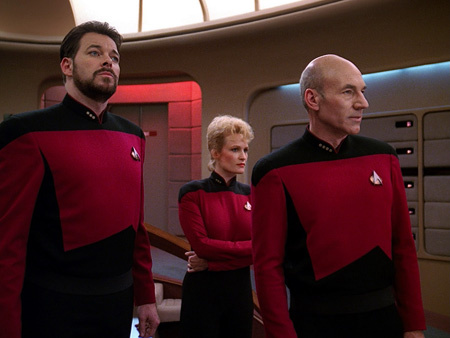
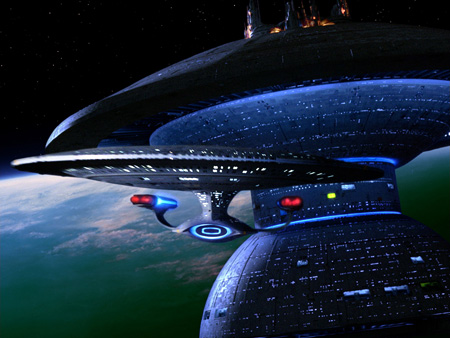
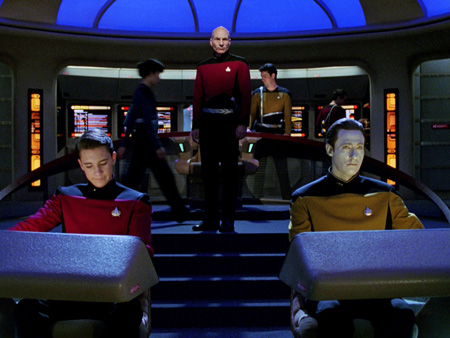
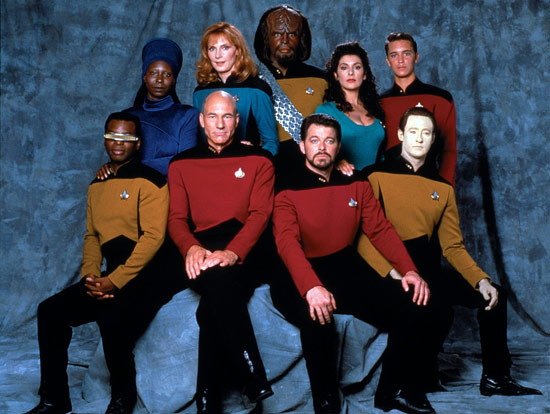

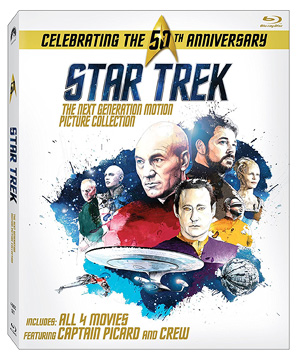



 1967-12-22 … Baltimore (Pikesville) — Pikes (28)
1967-12-22 … Baltimore (Pikesville) — Pikes (28)






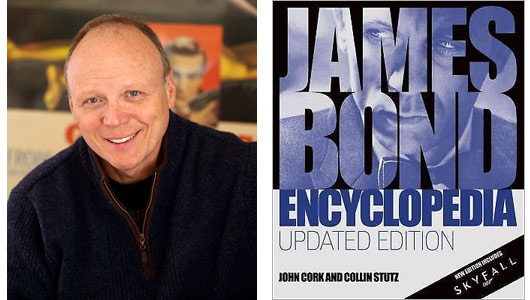
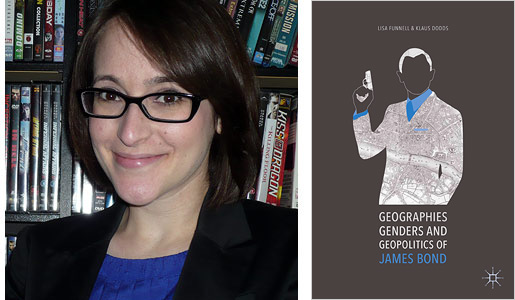








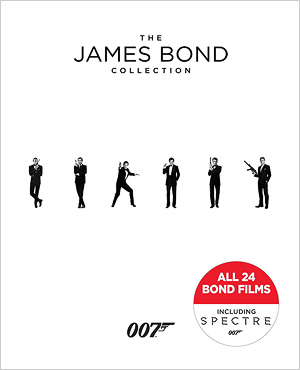


 Coate: Can you recall the first time you saw The Dark Crystal?
Coate: Can you recall the first time you saw The Dark Crystal?


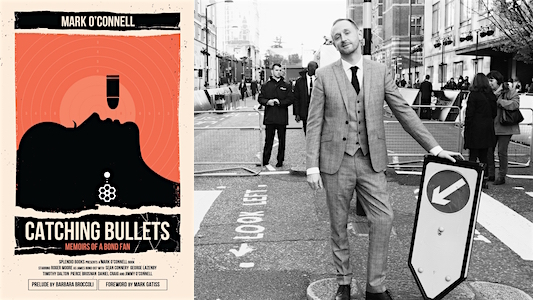


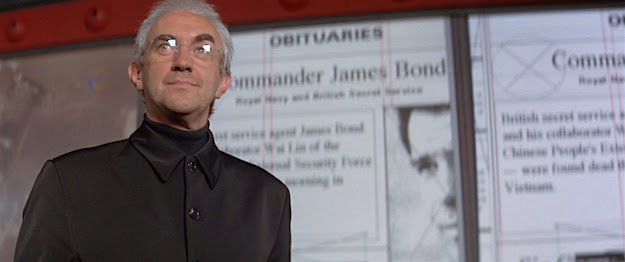



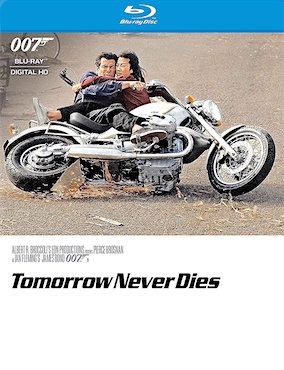



 1967-11-01 … Boston, MA — Saxon (32)
1967-11-01 … Boston, MA — Saxon (32) 1968-06-07 … Evansville, IN — Ross (8) [35mm]
1968-06-07 … Evansville, IN — Ross (8) [35mm]


 Coate: In what way was Richard Harris a memorable or effective King Arthur?
Coate: In what way was Richard Harris a memorable or effective King Arthur?







 Coate: Where do you think Casino Royale ranks among the James Bond movie series?
Coate: Where do you think Casino Royale ranks among the James Bond movie series?



 Coate: In what way was John Boorman an ideal choice to direct Point Blank, and where do you think the film ranks among his body of work?
Coate: In what way was John Boorman an ideal choice to direct Point Blank, and where do you think the film ranks among his body of work?





 Coate: In what way is Planet of the Apes a significant film?
Coate: In what way is Planet of the Apes a significant film?

 Coate: How do the 1970s sequels and the recent remakes and reboots compare to the original movie?
Coate: How do the 1970s sequels and the recent remakes and reboots compare to the original movie?





















































 CALIFORNIA
CALIFORNIA



















 ARIZONA
ARIZONA
 ADDITIONAL / SUBSEQUENT 70MM ENGAGEMENTS & SCREENINGS
ADDITIONAL / SUBSEQUENT 70MM ENGAGEMENTS & SCREENINGS
























